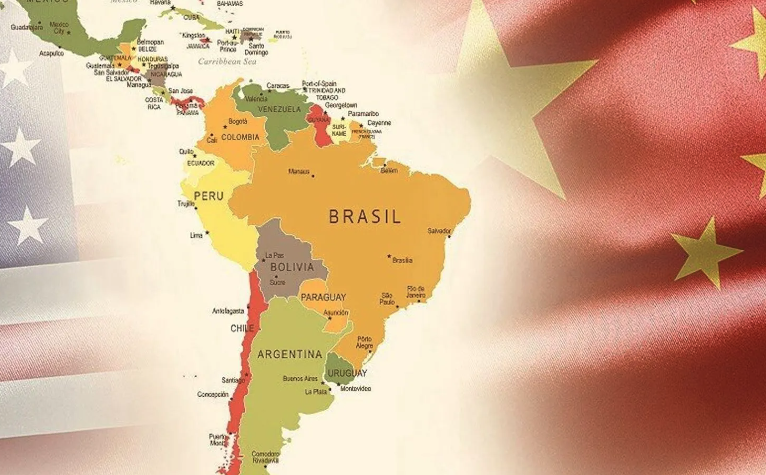2030 – Latin America: The next Centre of gravity in the Sino-American economic war

In the reorganisation of the global order and the power struggles it entails, the dice have already been cast for Africa, Europe, Asia, and Oceania. In these regions, three “blocs” become visible: a small bloc that aligns with the US, notably in Oceania; a second bloc, undoubtedly the largest, characteristic of a multipolar world, which is attempting to strike a balance between the two powers; and finally, a not insignificant bloc siding with China.
At a time when China’s economic potential remains immense, and the need for the United States to focus on itself is becoming ever more pressing, the economic conflict between these two powers is naturally refocused on Latin and Central America. From the Chinese point of view, this is the region that offers the greatest prospects for growth; from the American point of view, geographical proximity offers the best compatibility between withdrawal and maintaining a form of projection of its influence abroad.
One event epitomised the shift in this centre of gravity: the election of Javier Milei and the consequent U-turn by Argentina, which was due to join the BRICS on 1 January 2024 but is now considering dollarising its economy. We will therefore be analysing and anticipating the consequences of this trend, which will be accentuated by the forthcoming US elections.
December marks our traditional assessment of anticipations for 2023. As 2024 marks the 35th anniversary of the fall of the Berlin Wall, we have chosen to extend this look in the rear-view mirror to recount 35 years of global systemic transition through 35 major historical events. On this occasion, we invite you to join us in speaking out and anticipating what will be the key event in the global systemic crisis next year. To do this, we are providing you with a survey to answer this question, and then invite you to join our team in debating the various answers during a GEAB online event.
The consequences of this systemic transition are still having violent repercussions on conflicts inherited from the Cold War, as in the case of Azerbaijan and Armenia, which is why we spoke to Simon Hassoian, who is involved in humanitarian associations and has just returned from a trip to the region where he was able to see with his own eyes the state of the various balances of power.
At first sight, these conflicts appear to be a resurgence of tension, but they are also symptomatic of the resolution of situations that have been deadlocked for years, or even decades. They reflect the influence of global players – China, NATO, Russia, Turkey and the European Union – in finding a way out of these deadlocks. For this reason, we will be looking at the role of the West in regional integration efforts in a separate article.
A detailed summary of the GEAB issue 180 :
– Editorial – Plate tectonics of world order
– Latin America, the next Centre of gravity in the Sino-American economic war before 2030
– Assessing trends in 2023
– 35 dates to tell the story of 35 years of global systemic transition. What will be the 36th?
– A Reader’s Eyes on the future – Simon Hassoian: Culturally, envisioning lasting peace between Azerbaijanis and Armenians is very challenging
– The role of Western powers in regional integration efforts
– Investments, trends and recommendations
Subscribe here




Comments